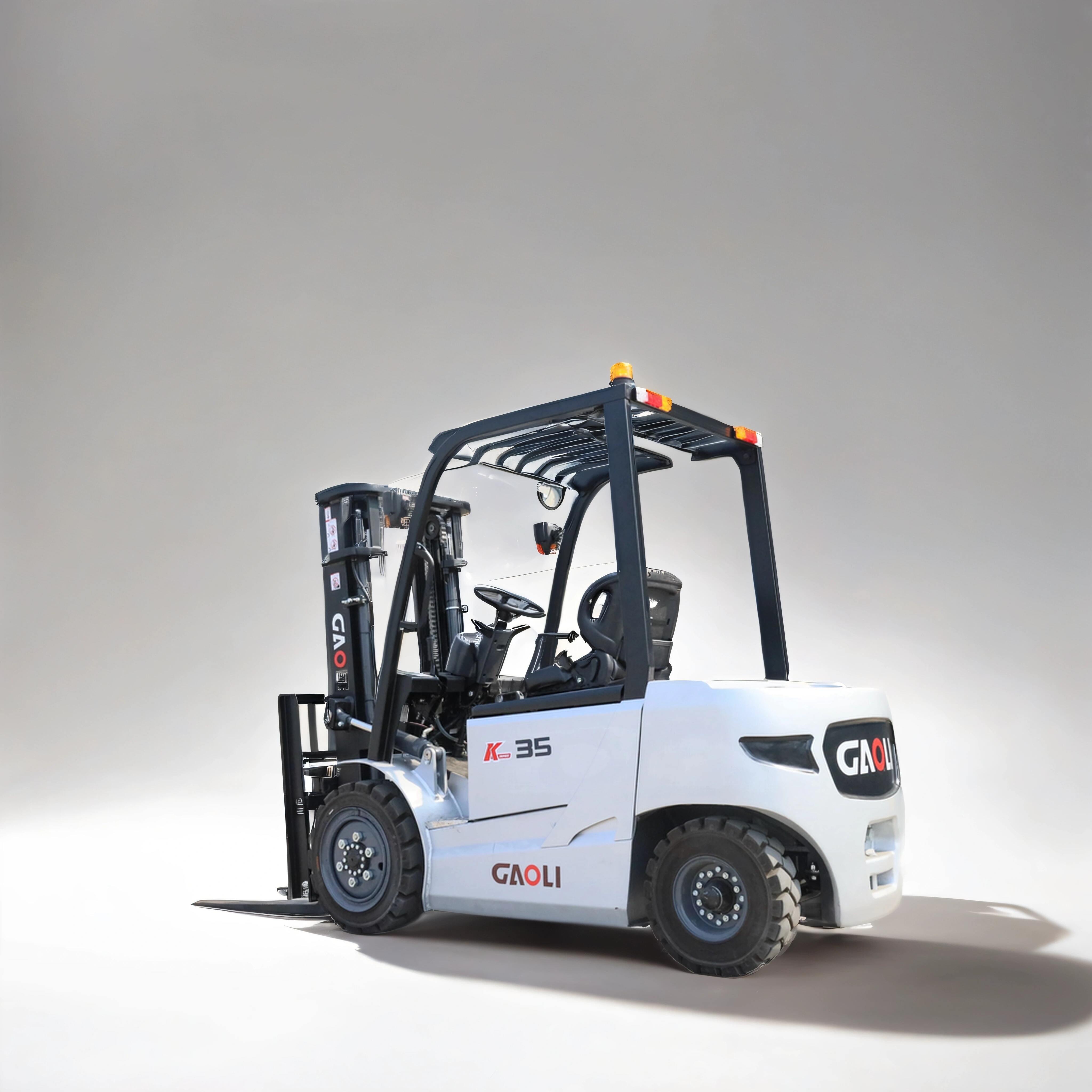Stability forms the backbone of counterbalance forklift trucks. Without it, handling heavy loads becomes risky and inefficient. These machines rely on specific design elements and operational principles to maintain balance and ensure safe performance.
The Counterbalance Mechanism
Rear counterweight and its role in maintaining balance
The rear counterweight plays a critical role in stabilizing counterbalance forklift trucks. It offsets the weight of the load being lifted at the front. This balance prevents tipping and ensures the forklift remains steady during operation. You can trust this mechanism to handle heavy loads without compromising safety.
Low center of gravity for enhanced stability
A low center of gravity enhances the stability of counterbalance forklift trucks. The design keeps the weight close to the ground, reducing the risk of overturning. This feature allows you to maneuver confidently, even when lifting loads to higher elevations.
Structural Design Features
Robust masts and frames for load support
The masts and frames of counterbalance forklift trucks are built to withstand heavy loads. Their robust construction provides the necessary support to keep the load secure. This structural strength ensures that you can handle materials safely and efficiently.
Wide wheelbase for improved stability
A wide wheelbase adds another layer of stability. It distributes the weight evenly across the forklift, reducing the chances of tipping. This design feature gives you better control, especially when navigating uneven surfaces or tight spaces.
Stability Triangle and Load Handling
Understanding the stability triangle in forklift operations
The stability triangle is a fundamental concept in forklift operations. It defines the area within which the center of gravity must remain to prevent tipping. By understanding this principle, you can operate counterbalance forklift trucks more safely and effectively.
Proper load distribution and tilt mechanisms
Proper load distribution is essential for maintaining stability. Placing the load evenly on the forks and keeping it close to the mast minimizes the risk of accidents. Tilt mechanisms also play a key role by allowing you to adjust the angle of the load, ensuring it stays secure during movement.
Counterbalance forklift trucks combine these stability features to deliver reliable performance. By understanding and utilizing these elements, you can enhance safety and efficiency in your material handling tasks.
Safety Features in Counterbalance Forklift Trucks
Safety features in counterbalance forklift trucks are essential for protecting operators and ensuring smooth operations. These features reduce risks and enhance workplace safety, allowing you to focus on efficient material handling.
Advanced Safety Systems
Stability control systems to prevent tipping
Stability control systems play a vital role in preventing tipping accidents. These systems monitor the forklift's balance and make real-time adjustments to maintain stability. By relying on this technology, you can operate confidently, even when handling heavy or uneven loads.
Load-sensing technology for safe lifting
Load-sensing technology ensures safe lifting by detecting the weight of the load and adjusting the forklift's performance accordingly. This feature prevents overloading and reduces the risk of mechanical failure. You can trust this system to provide accurate feedback, helping you handle materials safely.
Ergonomic and Operator-Centric Design
Comfortable seating and controls to reduce fatigue
Comfortable seating and intuitive controls improve your experience as an operator. Ergonomic designs reduce physical strain, allowing you to work longer without discomfort. This focus on operator well-being enhances productivity and minimizes errors caused by fatigue.
Enhanced visibility and mirrors for situational awareness
Enhanced visibility features, such as strategically placed mirrors and clear sightlines, improve your situational awareness. These tools help you monitor your surroundings and avoid obstacles. With better visibility, you can navigate busy workspaces more safely and efficiently.
Training and Maintenance for Safety
Importance of operator training in safe forklift use
Operator training is crucial for safe forklift use. Proper training equips you with the knowledge and skills needed to handle counterbalance forklift trucks effectively. By understanding safety protocols and operational techniques, you can reduce accidents and improve overall performance.
Regular maintenance to ensure safety systems are functional
Regular maintenance keeps safety systems functional and reliable. Inspections and timely repairs ensure that all components, from brakes to stability controls, work as intended. By prioritizing maintenance, you can prevent unexpected failures and maintain a safe working environment.
Counterbalance forklift trucks combine advanced safety systems, ergonomic designs, and proper training to create a secure operational framework. By leveraging these features, you can enhance safety and efficiency in your daily tasks.
Performance: Optimizing Efficiency in Counterbalance Forklift Trucks
Performance defines how effectively you can complete tasks with counterbalance forklift trucks. By focusing on precision, technology, and adaptability, these machines help you achieve higher productivity while maintaining safety and reliability.
Precision and Control
Advanced hydraulic systems for smooth and accurate operation
Hydraulic systems in counterbalance forklift trucks provide precise control over lifting and lowering. These systems allow you to handle loads with accuracy, even in tight spaces. Smooth hydraulic operation minimizes jerks, reducing the risk of damage to materials. This precision ensures that every movement is deliberate and safe.
Responsive steering and braking systems for maneuverability
Steering and braking systems in these forklifts enhance your ability to navigate complex environments. Responsive steering lets you make sharp turns with ease, while efficient braking ensures quick stops when needed. These features improve maneuverability, especially in warehouses or crowded workspaces. You gain better control, which translates to safer and faster operations.
Technology Integration
Telematics for real-time monitoring and diagnostics
Telematics systems provide real-time data about your forklift's performance. These systems monitor key metrics like fuel consumption, engine health, and operational hours. With this information, you can schedule maintenance proactively and avoid unexpected downtime. Telematics also helps you track usage patterns, enabling smarter decision-making for fleet management.
Energy-efficient engines and battery systems for sustainability
Modern counterbalance forklift trucks feature energy-efficient engines and advanced battery systems. These technologies reduce fuel consumption and emissions, making your operations more sustainable. Electric models offer quiet performance and lower operating costs. By choosing energy-efficient options, you contribute to environmental conservation while optimizing performance.
Versatility and Adaptability
Customizable attachments for diverse applications
Customizable attachments expand the functionality of counterbalance forklift trucks. Fork extensions, clamps, and rotators allow you to handle a variety of materials. These attachments adapt to your specific needs, whether you're moving pallets, barrels, or oversized loads. This versatility ensures that your forklift remains a valuable tool across different tasks.
Performance in various environments and load types
Counterbalance forklift trucks perform reliably in diverse environments. Whether you're working indoors on smooth floors or outdoors on uneven terrain, these machines maintain stability and efficiency. They handle different load types, from lightweight goods to heavy industrial materials. This adaptability ensures consistent performance, regardless of the challenges you face.
By leveraging precision, integrating advanced technology, and embracing versatility, you can optimize the performance of counterbalance forklift trucks. These features empower you to complete tasks efficiently while maintaining safety and reliability in your operations.
Stability, safety, and performance work together to make counterbalance forklift trucks reliable and efficient. Stability ensures balance during operations, while safety features protect operators and reduce risks. Performance enhancements improve precision and adaptability, helping you handle tasks effectively. By focusing on these aspects, you create a safer and more productive workplace. When selecting and maintaining forklifts, prioritize these features to maximize operational success. Your commitment to these principles ensures long-term efficiency and safety in material handling.


